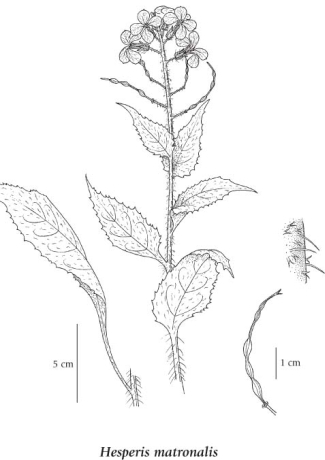Hesperis matronalis L.
sweet rocket (dames rocket; dames'-violet)
Brassicaceae (Mustard family)
Introduction to Vascular Plants
sweet rocket (dames rocket; dames'-violet)
Brassicaceae (Mustard family)
Introduction to Vascular Plants
